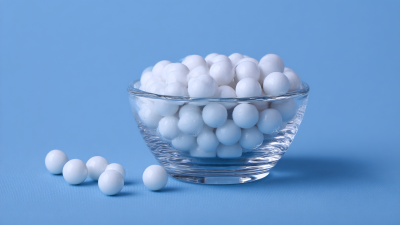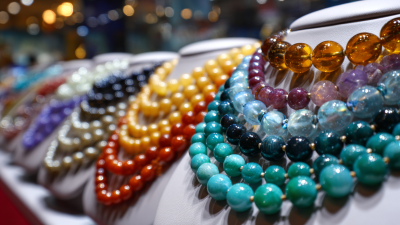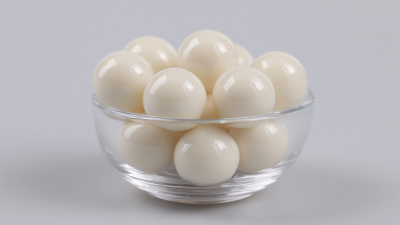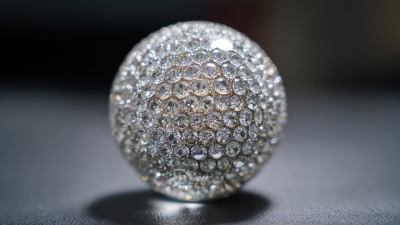The Ceria Zirconia Ball is emerging as a pivotal component in the realm of advanced materials, driven by its unique properties and versatile applications. According to a recent market report by Grand View Research, the global ceramic balls market is projected to reach USD 5.2 billion by 2025, with a significant portion attributed to the increasing demand for high-performance materials in various industries such as pharmaceuticals, electronics, and abrasives. Leveraging the exceptional hardness and chemical stability of Ceria Zirconia, manufacturers are poised to innovate new applications and enhance existing processes. The incorporation of Ceria into zirconia improves the material's toughness and wear resistance, making it ideal for critical applications like grinding media and catalysts in industrial settings. As industries continue to prioritize efficiency and sustainability, the Ceria Zirconia Ball stands at the forefront of technological advancement, unlocking new possibilities that promise to redefine performance standards.

The emerging applications of ceria zirconia balls in advanced manufacturing are transforming various industries, marked notably by innovations in materials science. Recent developments indicate a growing trend toward multifunctional materials that can tackle specific challenges such as environmental sustainability and healthcare applications. For instance, ceria nanoparticles are increasingly utilized in biomedical settings due to their potent antioxidant properties, which are critical in treating conditions like atherosclerosis. According to industry reports, the market for ceria-based materials is expected to expand significantly; projections estimate the white ceramic market will reach approximately $11.5 billion by 2033, fueled by developments in catalysts and other advanced manufacturing processes.
Moreover, rare earth-doped ceria demonstrates exceptional capabilities in enhancing oxygen diffusion at elevated temperatures, making it a valuable asset for applications in fuel cells. The proton exchange membrane fuel cell (PEMFC) sector is projected to grow, reflecting an estimated compound annual growth rate (CAGR) of 9.2% between 2026 and 2033. This potent synergy between ceria's properties and advanced manufacturing processes exemplifies the ongoing evolution of material science, offering promising avenues for innovation and efficiency across diverse sectors. As industries increasingly focus on multifunctionality and sustainability, ceria zirconia balls stand poised to play a pivotal role in shaping the future landscape of advanced material applications.
Ceria zirconia balls have emerged as pivotal components in catalytic converters, significantly enhancing their performance and efficiency. In recent studies, it has been reported that the incorporation of ceria in zirconia matrices can improve the oxygen storage capacity, which is essential for facilitating the reduction of harmful emissions in automotive applications. According to a 2022 report by the International Council on Clean Transportation, vehicles equipped with advanced catalytic converters featuring ceria zirconia balls have shown a reduction in nitrogen oxides (NOx) emissions by up to 50%, illustrating their effectiveness in meeting stringent environmental regulations.
Furthermore, the versatility of ceria zirconia balls extends beyond automotive applications into various environmental solutions. Their unique properties make them ideal for use in water treatment processes, where they can help remove heavy metals and other contaminants. A technical review published in the Journal of Environmental Management indicated that ceria zirconia-based catalysts can enhance the degradation of organic pollutants in wastewater, achieving removal rates higher than 90%. This capability positions ceria zirconia balls as a crucial player in advancing sustainable practices and ensuring cleaner environments in the future.

Ceria zirconia has emerged as a pivotal material in various advanced applications, primarily due to its exceptional hardness, strength, and durability. The hardness of ceria zirconia is significantly higher than that of traditional zirconia, making it an ideal candidate for demanding environments such as dental materials, cutting tools, and wear-resistant coatings. This enhanced hardness contributes not only to longevity but also to the efficiency of tools and components, reducing the frequency of replacements and maintenance.
Strength is another critical performance indicator of ceria zirconia materials. Its remarkable fracture toughness allows for resistance against mechanical stress and impacts, which is vital in sectors like aerospace and biomedical devices. The ability to withstand high loads without failing ensures safety and reliability in applications ranging from prosthetics to structural components. Additionally, durability under extreme conditions, such as high temperatures or corrosive environments, makes ceria zirconia an invaluable material in industries such as chemical processing and energy. These properties collectively position ceria zirconia as a transformative material for the future, unlocking new possibilities across various sectors.
The Ceria Zirconia Ball industry is poised for substantial growth, with market dynamics indicating a robust expansion projected by 2025. Recent industry reports suggest that the global market for Ceria Zirconia Balls is expected to reach approximately $500 million, driven by increasing applications in precision grinding, ceramics, and coatings. With a CAGR of around 7.5%, this growth reflects the rising demand for high-performance materials in sectors such as aerospace, automotive, and electronics, where durability and performance are paramount.
In addition, the expanding use of Ceria Zirconia Balls in environmental and energy applications, including battery production and wastewater treatment, is further enhancing its market appeal. This versatility not only highlights the ball's unique properties, such as high wear resistance and thermal stability but also positions it favorably in emerging technologies. Industry analysts predict that innovations in manufacturing processes will contribute significantly to revenue growth, allowing for more cost-effective production techniques.
Tips: As the market continues to evolve, stakeholders should consider engaging in continuous research and development initiatives to stay ahead of trends. Collaborating with material scientists can also lead to innovative applications, potentially unlocking new market opportunities. Lastly, keeping an eye on regulatory changes and environmental impacts will ensure sustained growth and market compliance in this rapidly advancing field.
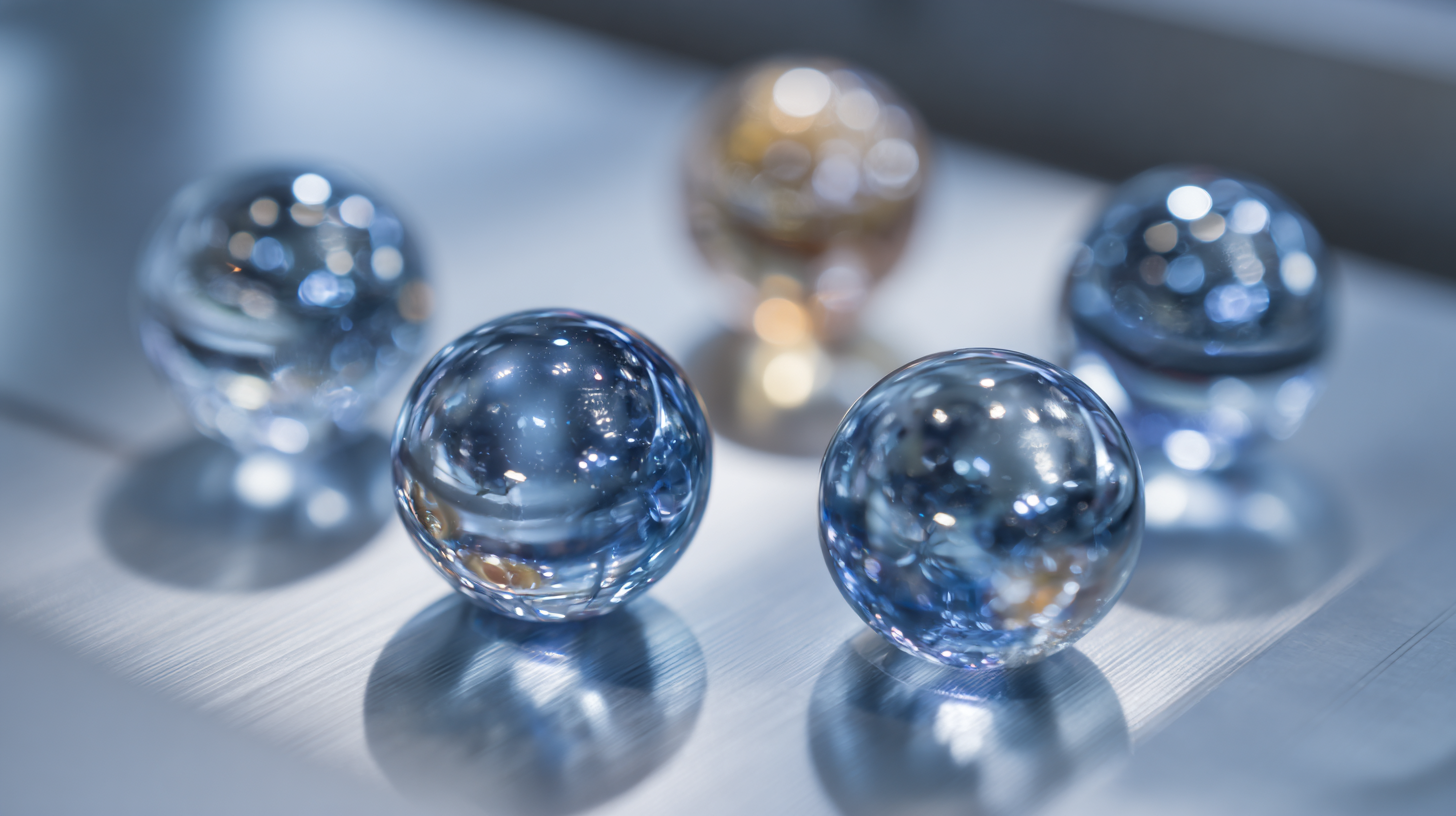
Recent advancements in the production techniques of ceria zirconia balls have significantly improved their efficiency and applicability in various industries. Innovative methods such as sol-gel synthesis and hydrothermal processing have enhanced the uniformity and quality of these advanced materials. By optimizing the thermal treatment processes, researchers can fine-tune the microstructure of ceria zirconia balls, leading to improved mechanical properties and stability under high-stress conditions. This precision in production not only enhances performance but also reduces material waste, making the manufacturing process more sustainable.
Furthermore, enhancing the surface properties of ceria zirconia balls is crucial for their effectiveness in applications ranging from catalysis to biomedical uses. Techniques such as surface modification and doping with rare earth elements have shown promising results in increasing the reactivity and durability of these materials. These improvements position ceria zirconia balls as a versatile solution for future technological challenges, enabling their adoption in cutting-edge applications that require high efficiency and performance. Through ongoing research and innovation, the potential of ceria zirconia balls continues to expand, signaling a new era in advanced material applications.
